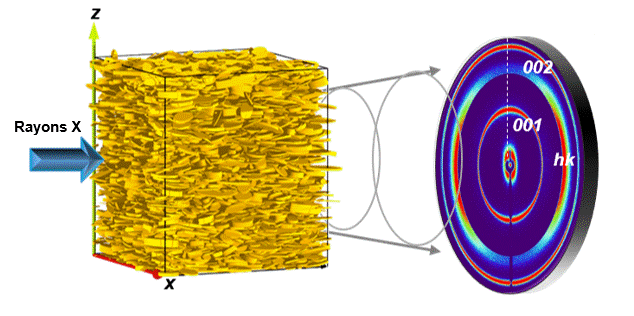Clays are lamellar minerals ubiquitous on the earth’s surface. Researchers at IC2MP, LPS and ICMN have shown that the preferred orientation of clays in a wide variety of natural environments can be described using a single orientation function.
The small size and lamellar shape of clays strongly impact the permeability of clay environments such as soils, subsoils and engineered materials, with clays playing a major role in the transfer of elements (water, nutrients, contaminants). Their preferential orientation induces an anisotropy of the transfer properties. Taking into account this anisotropy is delicate, due to the lack of a simple representation of the orientation distribution of these clay particles. Researchers from the Poitiers Institute of Chemistry of Environments and Materials (IC2MP, CNRS/University of Poitiers), the Solid State Physics Laboratory (LPS, CNRS/University of Paris Saclay) and the Interfaces, Containment, Materials and Nanostructures Laboratory (ICMN, CNRS/University of Orleans) have carried out a systematic study of the preferential orientation of clays on about a hundred clay materials including the main types of clays found in natural environments. Analysis of the anisotropy of the corresponding X-ray scattering images (figure) using the maximum entropy method, made it possible to determine a single orientation distribution function. This reference function could now be used to generically analyze the transfer of elements within clay media. Finally, the parameters (shape, interactions) that explain this uniqueness of the clay orientation function will be the subject of future investigations and could be of interest to different material communities.

The experiments were carried out on the WAXS-Cu device (MORPHEUS platform, MATRIX team).
Reference
A general orientation distribution function for clay-rich media
Thomas Dabat, Fabien Hubert, Erwan Paineau, Pascale Launois, Claude Laforest, Brian Grégoire, Baptiste Dazas, Emmanuel Tertre, Alfred Delville et Eric Ferrage.
Nature Communications 10, 5456 (2019).
doi:10.1038/s41467-019-13401-0
